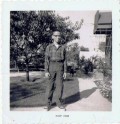On Finding Your Ever-Elusive Voice

Introductory Matters
How many times have you read a book that did everything right yet still failed to hold your interest?
The reason for this is simple, really:
It takes more than virtuosity to resonate.
Sometimes, a writer gets so caught up in craft, they bury their own voice. The piece stops being honest. It loses its X-Factor.
Don’t get me wrong. Craft matters. It just isn’t everything.
Learn your craft. Internalize it, but don’t let it cripple you.
So, how does one retain their voice while ensuring their piece isn’t poorly written?
1. Absorb and Internalize
First, while studying your craft, don’t do any writing save for the occasional exercise. Just absorb, internalize. Don’t be afraid to discard anything that doesn’t seem right. You’ll know; there’s plenty of bad advice out there. Most of it begins with words like ‘always’ or ‘never.’ Take in this information, good and bad, then read some of your favorite books, along with some books famous for breaking well-established rules. Look for instances in your favorites where the author breaks rules. Look for instances where the rulebreakers adhere to common wisdom.
Now, you're ready to get to work.
2. Brainstorm Your Story
I can’t tell you how to get your ideas. We all get them in vastly different ways. Whether you keep a dream journal, read the news, people watch, drop acid, or riff with another creative person is your business. My business is helping you realize your concept’s full potential. I recommend not proceeding to my next step until you have a high-concept pitch of your story’s idea, your main character, and a certain tone in mind for your piece. By tone, I mean how you want your piece to feel. Will it be atmospheric? Over-the-top gory? Humorous? All for you to decide. Once you’ve got these three pieces down, you can move to the next step.
3. Meditate on the 1st Line
In an empty room, turn off the lights and lie down. It’s very important you don’t fall asleep. You should, however, get close to the threshold. When you’re right on the edge, I want you to start thinking about your story.
Think about how it should start.
Zero your focus on the very first line.
Need some help? Consider this: some of the best first lines share a few traits. First, they’re almost always in medias res—for the uninitiated, that means ‘in the middle of the action.’ Second, they almost always introduce the main character. Third, they give some idea of the story’s setting. Finally, they set the tone. We all know the famous one from Stephen King’s The Dark Tower. There are hundreds of others. Just Google best first lines and you’ll find them. Almost all of them follow these rules, but notice I use the word ‘almost.’ There are no hard, fast rules in writing.
So, what’s the big deal about the first line?
Most people will tell you it’s good for hooking the reader, but we’re going to get a bit more philosophical than that. Think of your story as another world.
Spoiler: it is.
Given this, your first line is the combination needed to unlock the doorway to that world. Once you’ve done that, you can move freely throughout your story and its setting.
4. Start Writing
Sound like magic? It really is.
While you may still get stuck occasionally, your attitude toward the project will remain positive because you now understand its language. You’ll get past the slump because this world is now a second home to you. You might even find the slump is part of the process. It may lead you to see things to enrich your knowledge of your fictional world. Remember, as Bradbury said, a lot of writing is thinking about writing.
However, if you’re really lost, if you’ve somehow fallen out that door and it’s closed behind you, you can always come back to your dark room and meditate on the first line you’ll need to reenter. It won’t be the same combination of words you used before, but it will be in the same language, and, beyond your world will be waiting.
In Conclusion
As with all advice, your mileage may vary. However, this approach has worked wonders for me while writing of my award-nominated book Saint Sadist. Hope it works for you, too!








